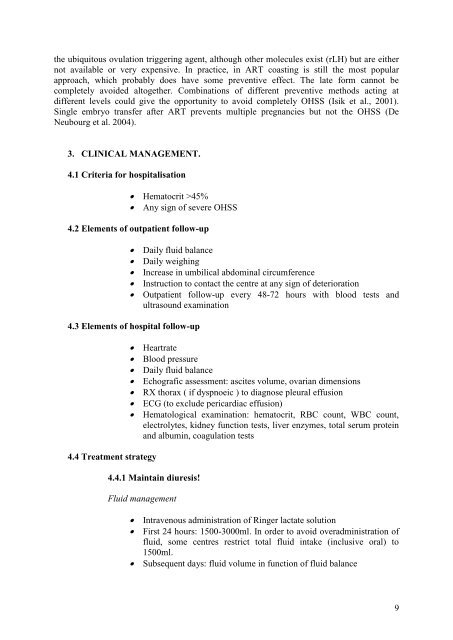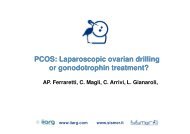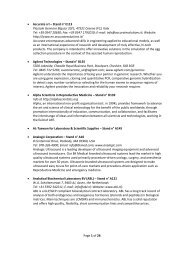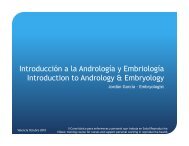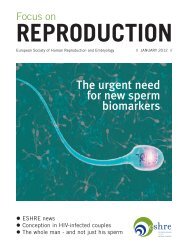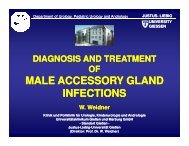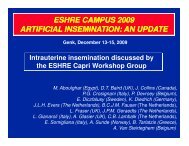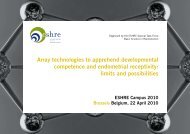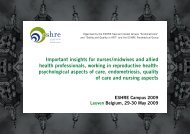Ovarian Hyperstimulation Syndrome - eshre
Ovarian Hyperstimulation Syndrome - eshre
Ovarian Hyperstimulation Syndrome - eshre
You also want an ePaper? Increase the reach of your titles
YUMPU automatically turns print PDFs into web optimized ePapers that Google loves.
the ubiquitous ovulation triggering agent, although other molecules exist (rLH) but are eithernot available or very expensive. In practice, in ART coasting is still the most popularapproach, which probably does have some preventive effect. The late form cannot becompletely avoided altogether. Combinations of different preventive methods acting atdifferent levels could give the opportunity to avoid completely OHSS (Isik et al., 2001).Single embryo transfer after ART prevents multiple pregnancies but not the OHSS (DeNeubourg et al. 2004).3. CLINICAL MANAGEMENT.4.1 Criteria for hospitalisation Hematocrit >45% Any sign of severe OHSS4.2 Elements of outpatient follow-upDaily fluid balanceDaily weighingIncrease in umbilical abdominal circumferenceInstruction to contact the centre at any sign of deteriorationOutpatient follow-up every 48-72 hours with blood tests andultrasound examination4.3 Elements of hospital follow-upHeartrateBlood pressureDaily fluid balanceEchografic assessment: ascites volume, ovarian dimensionsRX thorax ( if dyspnoeic ) to diagnose pleural effusionECG (to exclude pericardiac effusion)Hematological examination: hematocrit, RBC count, WBC count,electrolytes, kidney function tests, liver enzymes, total serum proteinand albumin, coagulation tests4.4 Treatment strategy4.4.1 Maintain diuresis!Fluid managementIntravenous administration of Ringer lactate solutionFirst 24 hours: 1500-3000ml. In order to avoid overadministration offluid, some centres restrict total fluid intake (inclusive oral) to1500ml.Subsequent days: fluid volume in function of fluid balance9


